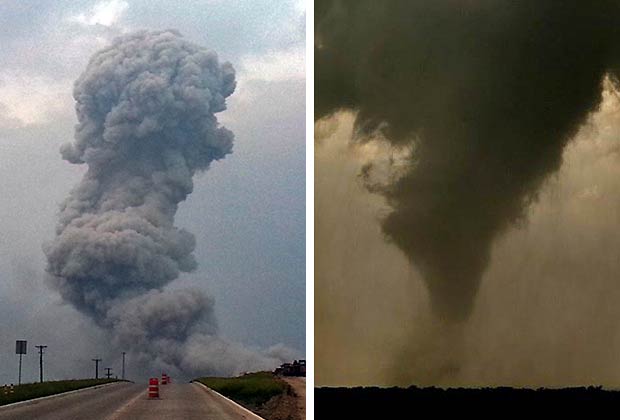HRRC comparing man-made, natural disasters in Texas towns
[See related story in the Bryan/College Station Eagle.] (https://one.arch.tamu.edu/news/2014/4/30/west-granbury-study/Texas A&M group studying recoveries in West, Granbury)
A Hazard Reduction and Recovery Center team is investigating how recovery from a man-made disaster differs from a natural disaster as part of a National Science Foundation study focusing on the Texas towns of West and Granbury, which were hit, respectively, by a chemical plant explosion and a tornado.
The two similar Texas towns, located approximately 80 miles apart, offer a rare opportunity for hazard recovery study. The Granbury tornado, which peaked at 180 mph, killed six, injured dozens and laid waste to 110 homes, leaving only the foundations of some. The explosion in West killed 15 people, injured 200 and caused as much as $100 million damage.
Due to the ephemeral, or perishable nature of the data to be collected in West and Granbury, the NSF issued a $40,000 rapid response research grant to expedite the discovery process.
"By rapidly deploying field teams," said Michelle Meyer, an HRRC post-doctoral researcher and principal investigator on the study, "we will be able to capture quickly evolving data providing unique comparisons between the responses to both disasters and gain a better understanding of the differences in early post-disaster recovery efforts at the household and community levels.”
The data should show whether different recovery processes emerge in the two towns, and if decisions made result in different outcomes.
See related story in the Bryan/College Station Eagle:
[Texas A&M group studying recoveries in West, Granbury]
(https://one.arch.tamu.edu/news/2014/4/30/west-granbury-study/Texas A&M group studying recoveries in West, Granbury)
Tags
- building a better texas
- environment
- hazard reduction & recovery
- hazards
- landscape architecture & urban planning
- research
Related Posts

Lindell adds to U.S. plant safety report
Nation's safety enhanced by resiliency studies

Study eyes how lower Lake Conroe levels impact economy
JAPA features 4 papers by TAMU disaster researchers
Prof suggests ways to enhance community hurricane resilience
Follow Us
Facebook Twitter Vimeo Youtube Flickr RSS
Recent Posts

Planning prof heads study of disaster housing aid

A message from the dean

Former student remembered as expert planner

Leading educator named new head of Architecture Dept.





_thumbnail_small.png)
